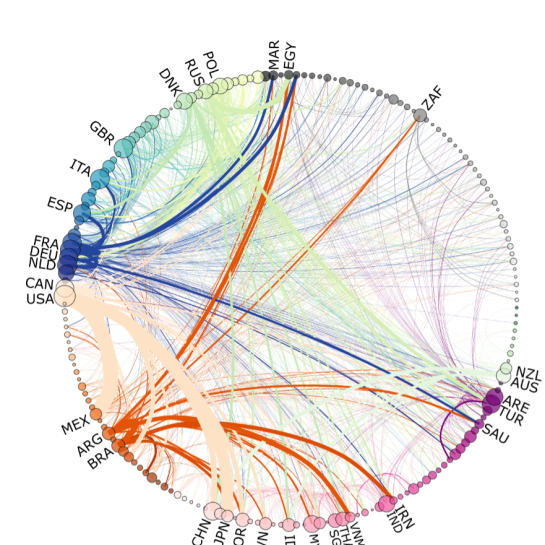Tracing the growth of the Global Agri-Food Trade Network: structure and evolution since 1986
The expansion of maritime, air, rail, and road transport infrastructure around the world over the past several decades has increased international trade and interconnected agricultural systems at the global scale. Thus, the issue of food security goes beyond domestic frontiers and requires taking into consideration the globalization of food and feed supply chains. The understanding of the mechanisms underlying the evolution of the global trade network is addressed through and forward-looking analysis of the recent trajectory of global agri-food flows. In summary, agri-food networks have grown considerably over the period and have evolved in a similar way for several agri-food products. Their structures have shifted from a heterogeneous network dominated by a few countries to a more connected and homogeneous network. Some evidence is presented on whether the growth in network interconnectedness and complexity has affected the resilience of global agricultural systems. In addition, to address the issue of food security, the net energy food flows that are consumable by humans are calculated in energy terms (calorie) considering the unavoidable metabolic losses of livestock for animal-based products. The network of calories highlights large deficits and, therefore, food dependency on global trade of several countries in Africa, Eastern and Northern Europe and Central Asia.

Lifestyle during the transition to parenthood, need for a multifactorial and family-based approach
Becoming a parent represents a lifechanging period for women and men. Both parents are at risk to change their body weight, body composition and energy balance related behavior (EBRB), i.e., diet, physical activity (PA) and sedentary behavior (SB) during the pregnancy and the postpartum period. Understanding this critical period and the changes parents(-to-be) experience can facilitate the development of health promotion programs. Although the transition to parenthood is often associated with pregnancy-related weight gain and retention in women, evidence on the effect of having a first child on men’s body weight is lacking. Data on (changes in) men’s weight and EBRB prior to and following the birth of a child are needed in order to provide a more comprehensive understanding of the impact of fatherhood on men’s lifestyle and health. The aim of the present talk is to provide insight into this critical transition phase, into the determinants of changes in EBRB during pregnancy and in the early postpartum period, and to provide knowledge on how future intervention strategies targeting should be developed.

